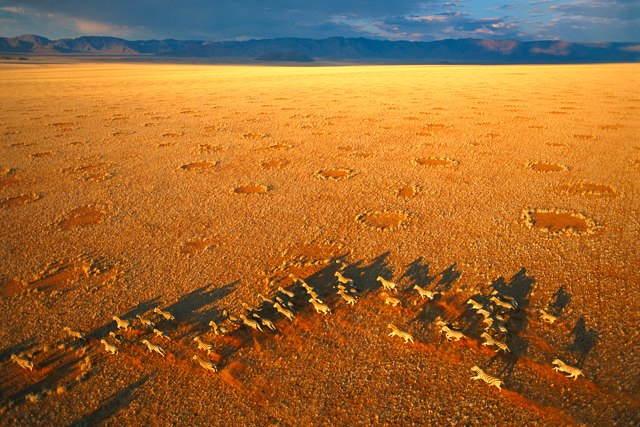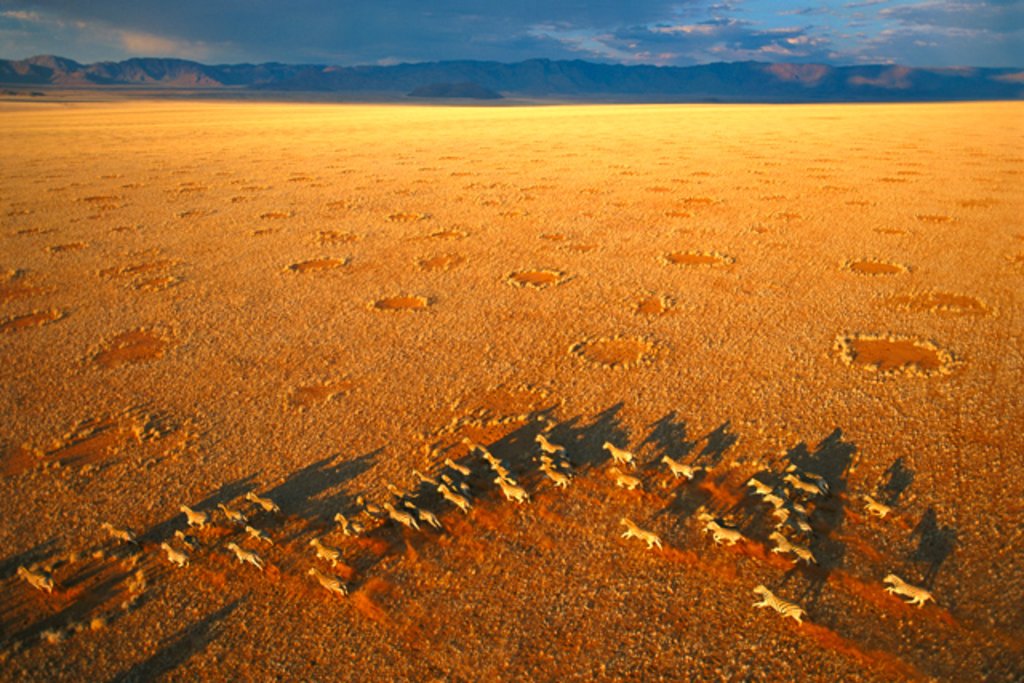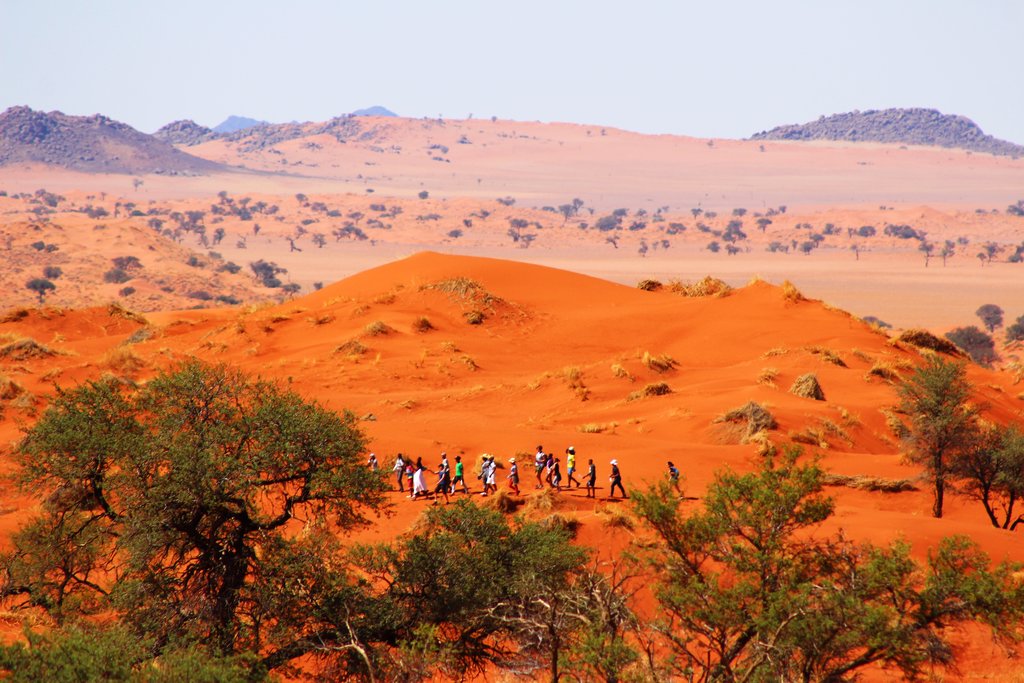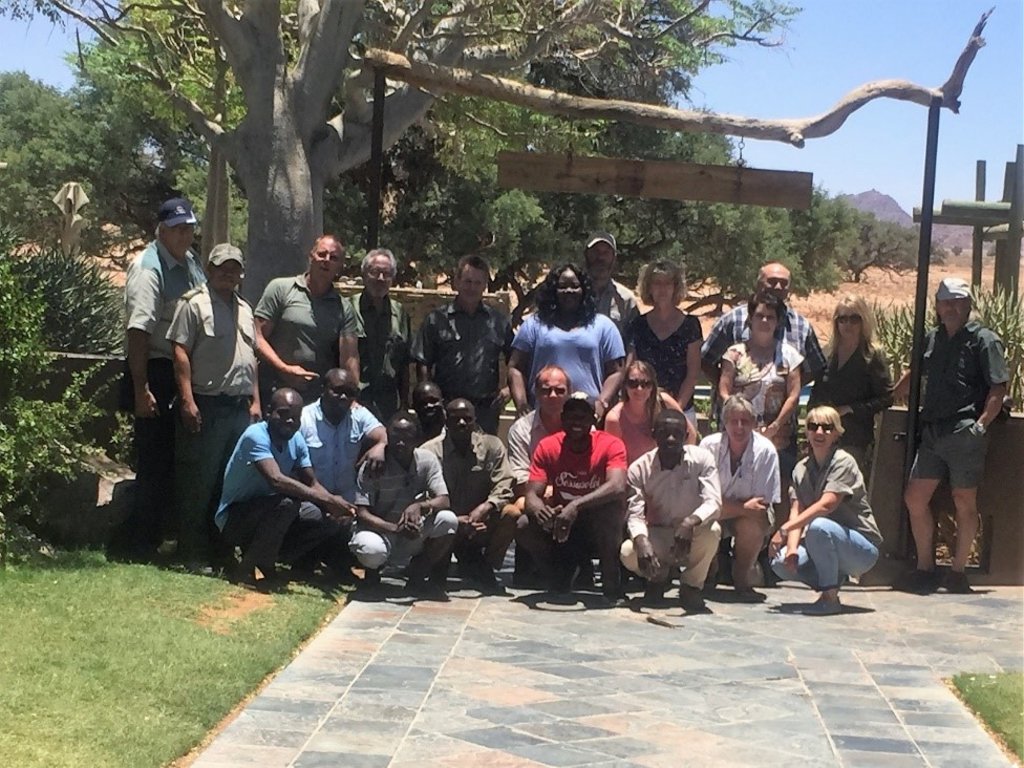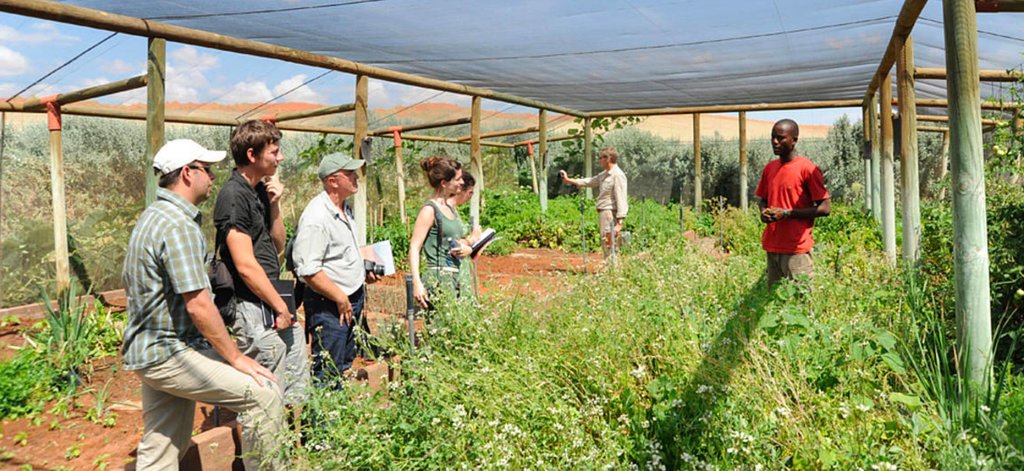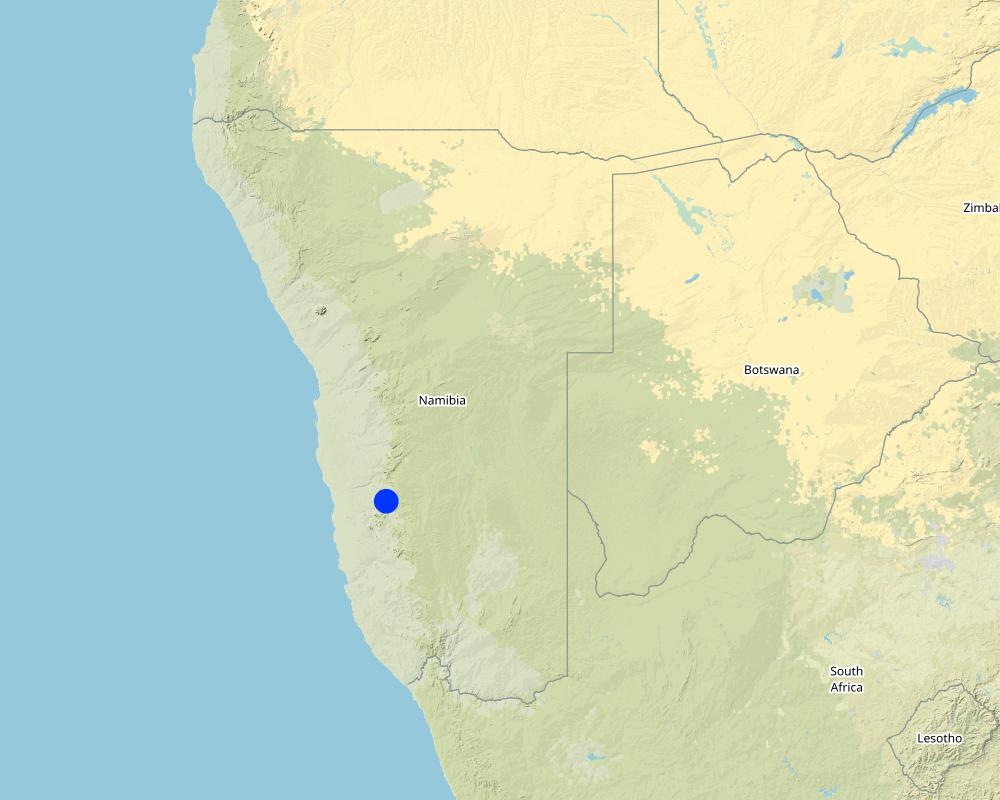Restoration of game migration routes across the Namib Desert [Namíbia]
- Criação:
- Atualização:
- Compilador/a: Ibo Zimmermann
- Editor: –
- Revisores: Donia Mühlematter, Simone Verzandvoort, Rima Mekdaschi Studer, Joana Eichenberger
NamibRand Nature Reserve
approaches_3286 - Namíbia
- Resumo completo em PDF
- Resumo completo em PDF para impressão
- Resumo completo no navegador
- Resumo completo (sem formatação)
- Restoration of game migration routes across the Namib Desert: 2 de Novembro de 2021 (public)
- Restoration of game migration routes across the Namib Desert: 6 de Outubro de 2018 (inactive)
- Restoration of game migration routes across the Namib Desert : 13 de Abril de 2018 (inactive)
- Restoration of game migration routes across the Namib Desert : 23 de Fevereiro de 2018 (inactive)
- Restoration of game migrations across Namib Desert: 12 de Janeiro de 2018 (inactive)
Veja as seções
Expandir tudo Recolher tudo1. Informação geral
1.2 Detalhes do contato das pessoas capacitadas e instituições envolvidas na avaliação e documentação da abordagem
Nome do projeto que facilitou a documentação/avaliação da Abordagem (se relevante)
NamibRand Nature ReserveNome do projeto que facilitou a documentação/avaliação da Abordagem (se relevante)
Book project: Guidelines to Rangeland Management in Sub-Saharan Africa (Rangeland Management)Nome da(s) instituição(ões) que facilitou(ram) a documentação/avaliação da Abordagem (se relevante)
Namibia University of Science and Technology ( NUST) - Namíbia1.3 Condições em relação ao uso da informação documentada através de WOCAT
Quando os dados foram compilados (no campo)?
01/11/2017
O compilador e a(s) pessoa(s) capacitada(s) aceitam as condições relativas ao uso de dados documentados através do WOCAT:
Sim
2. Descrição da abordagem de GST
2.1 Descrição curta da abordagem
Seventeen former sheep farms have been joined to form the world’s largest private nature reserve aimed at regenerating biodiversity to support high-quality low-impact tourism, environmental education and research. All farm owners are members of the management association.
2.2 Descrição detalhada da abordagem
Descrição detalhada da abordagem:
The NamibRand Nature Reserve is a not-for-profit organisation in south-western Namibia. It was founded in 1984 through the initiative of one farm owner, Albi Brueckner, who agreed, with 16 neighbouring farmers, to jointly manage their 215,000 ha for nature conservation and tourism. Its aims are:
To conserve biodiversity for the benefit of future generations and protect the sensitive and fragile environment.
To create a nature reserve with a healthy and functioning ecosystem, providing a sanctuary for flora and fauna, and to facilitate seasonal migratory routes in partnership with neighbours.
To promote sustainable utilisation – through ecologically sustainable and high-quality tourism and other projects.
To achieve a commercially viable operation to ensure continuity and financial independence.
The NamibRand Nature Reserve’s contributions to biodiversity conservation, in accordance with the environmental management plan, include the following:
• Removal of over 2,000 km of fencing to reinstate wildlife migration routes.
• Re-introduction of giraffe and cheetah.
• Bolstering numbers of red hartebeest and plains zebra.
• Removal of alien invasive vegetation such as Prosopis species and replacing these with indigenous Acacias.
• Zonation according to land use areas, including the setting aside 15% of the reserve as a wilderness area.
• Limiting overnight visitors to an average of one bed per 1,000 ha, and 25 beds per location.
• Conducting annual game counts, with results posted on the website www.namibrand.org
• Monitoring the endemic Hartmann’s mountain zebra through the use of camera traps. Results are at: http://www.nnf.org.na/project/mountain-zebra-project/13/1/12.html
• Continuous monitoring of drivers and determinants of environmental change to guide the management plan. Results are posted online at: http://www.landscapesnamibia.org/sossusvlei-namib/rainfall-monitoring
• Hosting researchers to study game migration routes. Results of wildlife monitoring, through the use of GPS collars are at: http://www.landscapesnamibia.org/sossusvlei-namib/research
• Hosting the Namib Desert Environmental Education Trust (NaDEET), to empower and educate schoolchildren for a sustainable future. It operates an environmental education and sustainable living centre (www.nadeet.org).
• A lighting management plan to qualify as an international dark sky reserve that avoids negative consequences of light pollution on biodiversity – which can interfere with animal navigation, reduce the hunting success of predators and prevent moths from pollinating (http://www.darksky.org/idsp/reserves/namibrand)
• A water management plan, including monitoring of the impact of a water hole on the surrounding vegetation.
• Implementation of tourism and land use zonation plans.
• Capture and sale of live game for wildlife population management purposes.
• Plans to develop a horticultural project to grow indigenous medicinal plants for commercial production, creating local jobs and income for conservation.
Rangeland management is achieved largely through continual monitoring and control of animal populations, and the balance between functional groups of their species, and turning off the water supply where grasses are in need of rest. Local outreach efforts focus mainly on predator-livestock management on neighbouring farms.
Stakeholders comprise the land owners, who agree on joint management, and the tourism concessionaires who operate in the reserve under contract. The reserve employs 12 people who are responsible for day-to-day management and maintenance. Biodiversity and land management are funded from park fees collected by the concessionaires from tourists who stay at their establishments. This small management team is possible, because tourism concessionaires offer scenic game drives across the reserve, while on the lookout for required action. For example, guides report issues such as leaking water pipes, unusual wildlife sightings, injured animals, and trespassers (etc.) to reserve managers, who can then react.
Land owners who have connected their land to the reserve and are members of the NamibRand Nature Reserve Association have the option of serving as directors of the association, with joint decision making powers. Those who choose not can still contribute to the strategic mission of the reserve at annual general meetings.
2.3 Fotos da abordagem
2.4 Vídeos da abordagem
Comentários, breve descrição:
Short introduction to the reserve
https://www.youtube.com/watch?v=QVQgJlBXn78
Data:
01/04/2015
Localização:
NamibRand Nature Reserve
Nome do cinegrafista:
IUCN-PAPACO
Comentários, breve descrição:
View of landscapes in the reserve
https://www.youtube.com/watch?v=8LZI2ZtPhbg
Data:
15/09/2014
Localização:
NamibRand Nature Reserve
Nome do cinegrafista:
Christine Guillot, Etendues Sauvages
Comentários, breve descrição:
Organic garden at lodge in the reserve
https://www.youtube.com/watch?v=U7RVKfeQ-0M
Data:
05/04/2016
Localização:
NamibRand nature Reserve
Nome do cinegrafista:
Ticket2Utopia – Dr. Paul Goddard
2.5 País/região/locais onde a abordagem foi aplicada
País:
Namíbia
Região/Estado/Província:
Southwestern Namibia in the Namib Desert.
Map
×2.6 Datas de início e término da abordagem
Indique o ano de início:
1984
Caso o ano exato seja desconhecido, indique a data aproximada de início da abordagem:
10-50 anos atrás
Comentários:
The first property was purchased in 1984. The reserve was registered as a Game Reserve in 1992 and registered as the NamibRand Nature Reserve, an Association Not for Gain, in 2002
2.7 Tipo de abordagem
- Iniciativa/inovação local recente
2.8 Principais metas/objetivos da abordagem
The approach aims, through participatory land use planning, to restore ecosystem function in the reserve and its surroundings to support high-quality, low-impact tourism that provides the means to support environmental education and other conservation projects.
The overall Strategic Vision of the NamibRand Nature Reserve is to manage the Pro-Namib area, alongside the Namib Desert, for the enhanced conservation of the landscape and its biodiversity.
2.9 Condição que propiciam ou inibem a implementação de tecnologia/tecnologias aplicada(s) segundo a abordagem
Normas e valores sociais/culturais/religiosos
- Propício
The area was historically visited by migrant San people and more recently by Nama people, who have settled permanently elsewhere. Since no people were living permanently in this hyper-arid ecosystem, the use of the area exclusively for nature conservation remains uncontested.
Disponibilidade/acesso a recursos e serviços financeiros
- Propício
The establishment of the reserve was initially possible through the ample financial resources of wealthy, altruistic and philanthropic investors.
- Inibitivo
The properties that make up the NamibRand Nature Reserve are located in a hyper-arid ecosystem. Farmers who attempted livestock farming there in the past almost all failed to establish economically viable farms, and most of them overextended themselves financially, resulting in the foreclosure of their farms. For this reason, the area became known as the “Bankruptcy Belt”. Banks were, in the past, extremely reluctant to extend loans to landowners in this area, due to the low value and low agricultural potential. In recent years, the successes of conservation and tourism have changed this situation and banks are now prepared to accept farms with such land use as collateral for extending loans.
Quadro institucional
- Propício
Progressive government company laws, such as the possibilit y to register a Section 21 company (“Association Not for Gain”) allow financial resources to be re-invested in conservation so as to further the objectives of the non-profit association. Section 21 companies also do not have to pay company taxes to the government.
Colaboração/coordenção de atores
- Propício
Articles of Association and the management plan allow for the creation of a management team that effectively coordinates all activities on the reserve.
Quadro jurídico (posse de terra, direitos de uso da terra e da água)
- Propício
Rights and therefore the possibility to benefit from wildlife are enshrined in the Nature Conservation Ordinance of 1975.
- Inibitivo
The current Nature Conservation Ordinance of 1975 does not allow for the registration of private nature reserves. The status of the land with the government thus remains as agricultural land, and law enforcement has to rely on common law such as trespassing on private property.
Políticas
- Propício
Progressive, enabling policies of the Ministry of Environment and Tourism, such as the tourism policy and the parks and neighbours policy ensure meaningful collaborations between the public and the private sector. See http://www.met.gov.na
Governança da terra (tomada de decisões, implementação e aplicação)
- Propício
Good governance is achieved through the adoption of Articles of Association and management plans. These guide decision-making and enable implementation. A set of rules, called the Vade Mecum, enable enforcement.
Conhecimento sobre GST, acesso a suporte técnico
- Propício
Good networking, membership to various professional bodies and collaboration with universities and researchers ensure good knowledge about sustainable land management and technical support.
Mercados (para comprar entradas, vender produtos) e preços
- Propício
A well-established tourism market to Namibia ensures a steady stream of visitors to the NamibRand Nature Reserve, enabling the collection of park fees and thus ensuring income for the reserve.
- Inibitivo
The remoteness of the reserve, 150km from the nearest town, results in expensive transport charges for goods and inflated prices for professional services.
Carga de trabalho, disponibilidade de força de trabalho
- Propício
Guides from tourism concessions on the reserve allow for sharing of workloads. Availability of human resources in the region is ample.
3. Participação e papel das partes interessadas envolvidas
3.1 Partes interessadas envolvidas na abordagem e seus papéis
- Usuários de terra/comunidades locais
17 former livestock farms owned by 12 companies, now converted to tourism enterprises
Some of them serve as directors of the NamibRand Nature Reserve Association, for joint decision making
- Especialistas em GST/ consultor agrícola
12 reserve management staff
To manage the reserve
- Pesquisadores
Visiting researchers from various academic institutions
To conduct research to help with applied research for management and "interest research" such as on “fairy circles”, which can be seen in the cover photo. The origin of these circles of bare soil surrounded by grass is still being disputed among scientists (https://www.youtube.com/watch?v=2VNyo9AoA8I). There is a Wildlife monitoring programme partnership with Namibia University of Science and Technology and the Greater Sossusvlei Landscape Association
- Professores/alunos/estudantes
4 full-time teachers at NADEET and 10 instructors at hospitality training centre.
To expose about 1000 visiting students per year to environmental education and to provide vocational training to about 100 trainees per year.
- Organização não governamental
Cheetah Conservation Fund and Giraffe Conservation Fund.
To reintroduce predators and wild herbivore species.
- Setor privado
Neighbouring farms
Co-management of the larger landscape with like-minded neighbours, as indicated at: http://www.landscapesnamibia.org/sossusvlei-namib/
- Governo nacional (planejadores, responsáveis pelas decisões)
Ministry of Environment and Tourism.
To assist with law enforcement and wildlife monitoring.
- Organização internacional
Member of IUCN
For advocacy and knowledge sharing.
3.2 Envolvimento do usuários de terra/comunidades locais nas diferentes fases da abordagem
| Envolvimento do usuários de terra/comunidades locais | Especifique quem estava envolvido e descreva as atividades | |
|---|---|---|
| Iniciação/motivação | Automobilização | The founding farm owner approached philanthropic donors to buy neighbouring farms and invest in tourism facilities and environmental education centre. |
| Planejamento | Apoio externo | In 1991, external experts provided advice for planning of the reserve. Influential persons involved included Chris Brown, Hugh Berry and Haino Rumpf of the Ministry of Environment, and Mary Seely of the Desert Research Foundation. |
| Implementação | Automobilização | Management staff were appointed in 1991, and paid for from the conservation levy raised from use of tourism facilities in the reserve. |
| Monitoramento/avaliação | Automobilização | Reserve management staff do the monitoring, paid for by the conservation levy. |
| research | Apoio externo | Research institutions conduct research after paying a small service fee. |
3.4 Decisão sobre a seleção de tecnologia/tecnologias de GST
Especifique quem decidiu sobre a seleção de tecnologia/tecnologias a serem implementadas:
- Principalmente usuários da terra, apoiados por especialistas em GST
Explique:
The Reserve's vision and mission were set up by its directors, who comprise farm owners willing to serve in this decision making role, at the Initiation workshop in 1991. Management actions were then Implemented under the guidance of various specialists.
Especifique em que base foram tomadas as decisões:
- Avaliação de conhecimento bem documentado de GST (tomada de decisão baseada em evidências)
- Resultados de pesquisa
- Experiência pessoal e opiniões (não documentado)
4. Suporte técnico, reforço das capacidades e gestão do conhecimento
4.1 Reforço das capacidades/formação
Foi oferecida formação aos usuários da terra/outras partes interessadas?
Sim
Especifique quem foi capacitado:
- Usuários de terra
- Equipe de campo/consultores
- Tourism concessionaires
Tipo de formação:
- Em exercício
- Áreas de demonstração
- Reuniões públicas
Tipo de formação:
- Exchange visits
Assuntos abordados:
Biodiversity conservation, financial management, tourism best practices, principles of co-management, human-wildlife conflict resolution, rehabilitation.
4.2 Serviço de consultoria
Os usuários de terra têm acesso a um serviço de consultoria?
Sim
Especifique se foi oferecido serviço de consultoria:
- nas áreas dos usuários da terra
- Em centros permanentes
Descreva/comentários:
Advice is provided by the Namibia Chamber of Environment, the Namibia Nature Foundation, the Ministry of Environment and Tourism Resource Centre, the Namibia University of Science and Technology, the Giraffe Conservation Fund and other wildlife biologists on issues such as determination of wildlife carrying capacities.
4.3 Fortalecimento da instituição (desenvolvimento organizacional)
As instituições foram fortalecidas ou estabelecidas através da abordagem?
- Sim, significativamente
Especifique a que nível (níveis) as instituições foram fortalecidas ou estabelecidas:
- Local
Descreva instituição, papéis e responsabilidades, membros, etc.
NamibRand Nature Reserve Association. All land owners are members, who elect the directors. They manage the reserve according to an agreed strategy.
Especifique o tipo de apoio:
- Financeiro
Dê mais detalhes:
Hiring of lawyers and auditors/accountants to establish the association.
4.4 Monitoramento e avaliação
Monitoramento e avaliação são partes da abordagem?
Sim
Comentários:
Impacts are monitored to feed back into management.
Caso afirmativo, esta documentação é destinada a ser utilizada para monitoramento e avaliação?
Não
4.5 Pesquisa
A pesquisa foi parte da abordagem?
Sim
Especifique os tópicos:
- Ecologia
Dê mais detalhes e indique quem realizou a pesquisa:
Determination of wildlife carrying capacities by wildlife biologists.
5. Financiamento e apoio material externo
5.1 Orçamento anual para o componente de GST da abordagem
Caso o orçamento exato seja desconhecido, indique a faixa:
- 100.000-1.000.000
Comentários (p. ex. principais fontes de recursos/principais doadores):
Self funded from conservation levy collected from tourism income.
5.2 Apoio financeiro/material concedido aos usuários da terra
Os usuários da terra receberam apoio financeiro/material para a implementação de tecnologia/tecnologias?
Não
5.4 Crédito
Foi concedido crédito segundo a abordagem para atividades de GST?
Não
5.5 Outros incentivos ou instrumentos
Foram utilizados outros incentivos ou instrumentos para promover a implementação das tecnologias de GST?
Não
6. Análise de impactos e declarações finais
6.1 Impactos da abordagem
A abordagem concedeu autonomia aos usuários locais de terra, melhorou a participação das partes interessadas?
- Não
- Sim, pouco
- Sim, moderadamente
- Sim, significativamente
Interest in owning land has greatly increased. Land prices have risen and more tourism establishments were built.
A abordagem propiciou a tomada de decisão baseada em evidências?
- Não
- Sim, pouco
- Sim, moderadamente
- Sim, significativamente
Through monitoring, to determine wildlife carrying capacity.
A abordagem auxiliou os usuários da terra a implementar e manter as tecnologias de GST?
- Não
- Sim, pouco
- Sim, moderadamente
- Sim, significativamente
Research and expert advice drives appropriate management for the ecology. There are no more sheep and associated weeds, while wildlife numbers increased.
A abordagem melhorou a coordenação e a implementação economicamente eficiente da GST?
- Não
- Sim, pouco
- Sim, moderadamente
- Sim, significativamente
By applying economies of scale. Managed holistically by a small, effective team.
A abordagem mobilizou/melhorou o acesso aos recursos financeiros para implementação da GST?
- Não
- Sim, pouco
- Sim, moderadamente
- Sim, significativamente
Through awarding of tourism concessions and collection of park fees.
A abordagem aprimorou o conhecimento e as capacidades dos usuários da terra para implementar a GST?
- Não
- Sim, pouco
- Sim, moderadamente
- Sim, significativamente
Through various training and research activities.
A abordagem aprimorou o conhecimento e as capacidades de outras partes interessadas?
- Não
- Sim, pouco
- Sim, moderadamente
- Sim, significativamente
Through accessing information and gaining knowledge from research.
A abordagem construiu/fortaleceu instituições, colaboração entre partes interessadas?
- Não
- Sim, pouco
- Sim, moderadamente
- Sim, significativamente
Through establishment of the association, appointment of the management team and information sharing.
A abordagem atenuou conflitos?
- Não
- Sim, pouco
- Sim, moderadamente
- Sim, significativamente
Through implantation of a joint management plan and shared vision.
A abordagem concedeu autonomia aos grupos social e economicamente desfavorecidos?
- Não
- Sim, pouco
- Sim, moderadamente
- Sim, significativamente
There are no local communities living within the area, but children from all over the country visit the environmental education centre.
A abordagem melhorou a igualdade de gêneros e concedeu autonomia a mulheres e meninas?
- Não
- Sim, pouco
- Sim, moderadamente
- Sim, significativamente
Through policies prohibiting gender discrimination, implemented by tourism enterprises.
A abordagem encorajou os jovens/as próximas gerações de usuários de terra a se envolverem na GST?
- Não
- Sim, pouco
- Sim, moderadamente
- Sim, significativamente
Through the environmental education and vocational training centres.
A abordagem melhorou as questões de posse de terra/diretos do usuário que inibiam a implementação das tecnologias de GST?
- Não
- Sim, pouco
- Sim, moderadamente
- Sim, significativamente
Through establishment of the Association for joint management and guidelines that are followed in the management plan.
A abordagem resultou em segurança alimentar aprimorada/nutrição melhorada?
- Não
- Sim, pouco
- Sim, moderadamente
- Sim, significativamente
Through the organic garden of 1 ha irrigated with borehole water and featuring in one of the Youtube videos, the improved financial status of the area and access to meat of culled animals for reserve workers and tourists.
A abordagem melhorou o acesso aos mercados?
- Não
- Sim, pouco
- Sim, moderadamente
- Sim, significativamente
Due to serving tourism needs.
A abordagem resultou em acesso melhorado à água e ao saneamento?
- Não
- Sim, pouco
- Sim, moderadamente
- Sim, significativamente
Workers have access to borehole water pumped for tourism.
A abordagem resultou em uso/fontes de energia mais sustentável?
- Não
- Sim, pouco
- Sim, moderadamente
- Sim, significativamente
Solar power is used to generate electricity and heat water.
A abordagem aprimorou a capacidade dos usuários da terra de adaptar-se a mudanças climáticas/extremos e atenuar os desastres relacionados com o clima?
- Não
- Sim, pouco
- Sim, moderadamente
- Sim, significativamente
Based on naturally adapted species that are able to migrate.
A abordagem resultou em emprego, oportunidades de renda?
- Não
- Sim, pouco
- Sim, moderadamente
- Sim, significativamente
The current land use based on tourism supports times more employees per unit area compared with former sheep farming.
National economy:
- Não
- Sim, pouco
- Sim, moderadamente
- Sim, significativamente
Contribution to national income through higher wages in the tourism industry.
6.2 Principal motivação dos usuários da terra para implementar a GST
- Lucro (lucrabilidade) aumentado, melhora da relação custo-benefício
Through tourism, compared with former sheep farming.
- Degradação do solo reduzida
Reliance on more appropriate land use.
- Riscos de desastre reduzido
Nature takes better care of itself and is more resilient to drought than sheep farming was.
- Carga de trabalho reduzida
Sheep herders are no longer needed and there is a small, efficient management team, assisted by information provided through tour guides when their attention is required.
- Prestígio, pressão social/coesão social
Through membership of the association.
- Consciência ambiental
Forms the vision of the association.
- melhoria dos conhecimentos e aptidões de GST
Improved resource management due to expert knowledge.
- Melhoria estética
There are rules to prevent unsightly buildings and maintain the clear night sky, free from light pollution.
- Atenuação de conflitos
Through the association constitution and discussions at planning meetings working towards the common goal
- Philantropic
Wanting to do good and contribute to conservation.
6.3 Atividades de sustentabilidade de abordagem
Os usuários da terra podem manter o que foi implementado através da abordagem (sem apoio externo)?
- Sim
Caso afirmativo, descreva como:
Through income largely derived from tourism and partly from sale of captured game animals in accordance with the environmental management plan.
6.4 Pontos fortes/vantagens da abordagem
| Pontos fortes/vantagens/oportunidades na visão do usuário da terra |
|---|
| The reserve is centrally and holistically managed by a team. |
| Resilience attained by the large unfenced ecosystem. |
| Land users coming together to sign and form a legally recognised body that is more robust. |
| Tourism is more profitable and sustainable than agriculture for such a hyper arid region. |
| Pontos fortes/vantagens/oportunidades na visão do compilador ou de outra pessoa capacitada |
|---|
| Resilience to climate change through natural resources, using the competitive advantage of nature. |
| Private property excludes communal demands and allows fast and easy decision making on land use. |
6.5 Pontos fracos, desvantagens da tecnologia e formas de superá-los
| Pontos fracos/desvantagens/riscos na visão do usuário da terra | Como eles podem ser superados? |
|---|---|
| There is currently no legislative support from government for protection of private land. | The new wildlife bill being drafted makes provision for privately protected areas. |
| In the eyes of the Ministry of Lands, there are only two types of land, either urban and gazetted (e.g. parks) or agricultural (subject to land tax). | Include a third category of land for protected areas, such as the desert margin being non-agricultural. |
7. Referências e links
7.1 Métodos/fontes de informação
- entrevistas com usuários de terras
Chief Executive Officer of the NamibRand Nature Reserve
7.2 Referências às publicações disponíveis
Título, autor, ano, ISBN:
A Guidebook to the NamibRand Nature Reserve, 2017, ISBN 978-99945-85-14-4
Disponível de onde? Custos?
Local bookshops for approximately USD25
7.3 Links para informação relevante que está disponível online
Título/ descrição:
Website of NamibRand Nature Reserve
URL:
www.namibrand.org
Título/ descrição:
Website of Namib Desert Environmental Education Trust
URL:
www.nadeet.org
Links e módulos
Expandir tudo Recolher tudoLinks
Não há links
Módulos
Não há módulos


